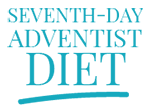“God designed that the living machinery should be in daily activity. For in this activity or motion is its preserving power…. The more we exercise, the better will be the circulation of the blood.”—Ellen G. White, Healthful Living
It’s no surprise that exercise makes the list of Adventist health principles. In fact, exercise is taken pretty seriously by Americans with somewhere between 50-75% of Americas claiming that they exercise at least once a week.
But wait- If that many people actually exercise why there are such high rates of obesity and heart disease?
Well, it’s very probable that people don’t exercise regularly or even when they are exercising- they aren’t doing it effectively or monitoring their food intake appropriately.
My sister, a frequent gym junkie, often observed overweight individuals who would come into the gym and walk on the treadmill while drinking large sugar filled beverages. Has the power of exercise been over-touted?
Exercise is wonderful and it does amazing things for the body, but there are some ways to exercise that are better than others!
What is Exercise?
The official definition of exercise is “activity requiring physical effort, carried out especially to sustain or improve health and fitness”.
Exercise should consist of a mixture of stretching, cardiovascular activity and strength training.
Stretching increases your range of motion throughout every muscle group in your body.
Cardiovascular activity, which includes running, swimming, and cycling, works out your heart and lungs. With heart attacks rampant and on the rise working out your heart and lungs is extremely important!
Strength training is also extremely important as it allows you to build muscle mass and strengthen your core. Not only can it help you have better posture, but it can prevent injuries from occurring.
Benefits of Exercising:
The main benefits of exercise are included in the list below:
Living a longer and healthier life.
Protects you from heart disease.
Protects you from certain cancers such as endometrial, lung, breast and colon cancer.
Protects you from diabetes.
Protects you from osteoporosis.
Increases cognitive function.
Increases positive feelings and mood.
Helps to prevent obesity.
Improves the function of the muscles, joints, lungs and heart.
Improves sleep while reducing stress.
Wow, those sound great right?! But, what about the individual types of exercise, what do they do?
Stretching:
Brings nutrients to the joints and contributes to bone and joint health. Being flexible also reduces your chances of injuries to your joints and muscles and improves coordination. If you’re getting older (which we all are) your muscles will lose their elasticity. So, it’s important to stretch in order to maintain the range of motion in your joints.
Cardiovascular Activity:
Aerobic activity is important because it strengthens you heart and lungs.
Physiologically speaking, your lungs bring oxygen into your body where it ends up in your blood stream. Your heart them pumps that blood throughout your entire body.
Cardiovascular activity is awesome because it works both of these organs making it easier for your lungs to disburse oxygen through your tissue into the blood stream as well as dispose of harmful carbon dioxide. Your heart on the other hand, doesn’t just get more efficient, it grows stronger and has an easier time sending the correct amount of oxygen throughout your body with ease. Because of this, those who do aerobic activity will also reduce their risk of heart attack, high cholesterol, blood pressure and diabetes.
Besides all the wonderful heart health effects of cardio, it also releases serotonin which makes you feel good and helps to reduce symptoms of depression. It helps you to sleep better at night and reduces your over-all stress.
Strength training:
Strength training helps you to be a stronger and fitter person while revving up your metabolism. Building muscle helps to protect your bones which is great for those who are prone to osteoporosis. More muscle equates to more calories being burned which is great for those who are trying to lose or maintain weight. Strength training can also reduce and eliminate symptoms of depression, back pain, arthritis, obesity, osteoporosis, and diabetes.
How to Start
Before starting any activity it is important to check with your doctor to verify that you’re healthy enough to proceed with your exercise plans!
The most effective way to start exercising is to set reasonable goals based upon your current fitness levels. If you are currently sedentary your goal may be to stretch in the morning for five minutes and walk for fifteen minutes during your lunch break. If you are already exercising then you should figure out what you’re missing in your routine. Are you taking the time to stretch? Have you forgone weights out of fear they will make you “bulky”. Re-evaluate these issues and set goals to start incorporating all three types of exercise into your routine. Whatever you decide to do, make it fun! If you don’t like what you’re doing you won’t stick with it!
How Often?
Stretching:
Minimum of 5-10 minutes a day or 15-20 minutes a day, three days a week for a total of around 60 minutes a week. Going under three days a week is not as effective and you won’t get the full benefits of your stretch training.
Cardiovascular:
Twenty minutes of vigorous exercise three times a week or thirty minutes of moderate cardio five days a week.
Note: It is important to make sure you don’t over do it! Before starting your cardio you should make sure you know your target range for your pulse and check it during your workout to make sure you aren’t pushing too hard. A heart monitor is a great tool for this!
Strength Training:
With strength training you want to work out somewhere between three and four times a week and no more than two days back to back. You should try to train each muscle group at least once a week.
The most important rule though…..
You should have at least one day of rest from your exercise routine! This gives your body time to recover.
Please Note: The material appearing on seventhdayadventistdiet.com is for educational use only. It should not be used as a substitute for professional medical advice.
http://exercise.about.com/cs/cardioworkouts/a/cardio101.htm http://www.everydayhealth.com/fitness/add-strength-training-to-your-workout.aspx http://www.mayoclinic.org/healthy-living/fitness/in-depth/strength-training/art-20046670 https://www.hsph.harvard.edu/nutritionsource/staying-active-full-story/ http://www.sharecare.com/health/flexibility-training/how-often-flexibility-exercises http://www.livestrong.com/article/227267-how-many-days-a-week-should-i-do-cardio-to-lose-weight/ http://www.aworkoutroutine.com/exercise-frequency/


